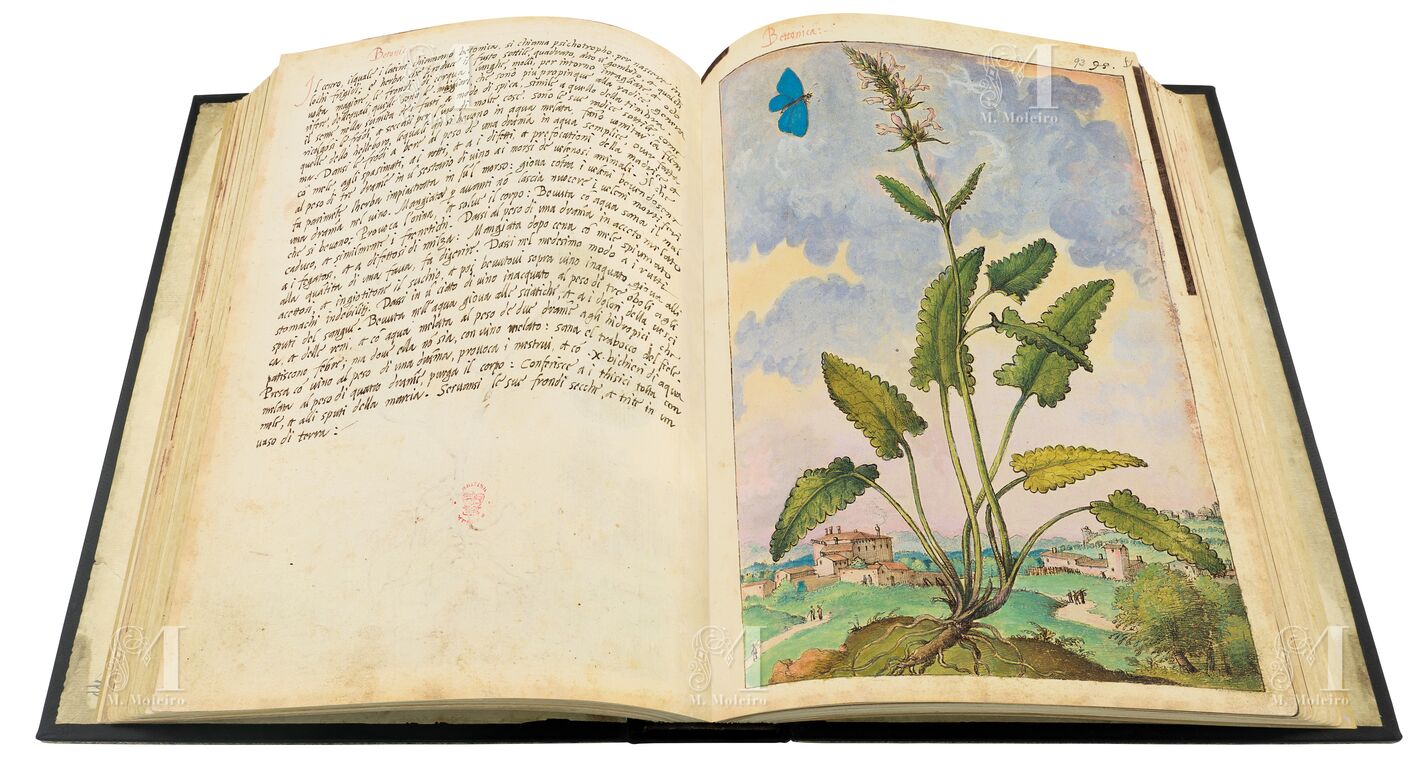
"Betony, which in Latin they call betonica, is called psychotrophon because it grows in cold places. It is a plant with a thin, four-cornered stem, a cubit high and sometimes also more. It has leaves like the oak, long, soft, scented, and with toothed edges; the largest of these are those closest to the root. At the top of the stems is an ear containing the seed, like Roman hyssop. The leaves are harvested and dried for many uses; its roots are thin, like those of the hellebore, and when they are drunk in honeyed water induce the vomiting of phlegm. A dram of leaves, drunk in pure or honeyed water, are good for convulsions, ruptures, disorders and suffocation of the uterus; three drams drunk in a jug of wine are good for the bites of venomous creatures. The plant also has this effect on bites, applied as a poultice. A dram drunk in wine is an effective antidote for poisons; if it is eaten as a preventive, there will be no harm from the drinking of deadly poisons. It has a diuretic and laxative effect. Drunk with water it cures those afflicted with epilepsy and delirium. A dram of it is given in honeyed vinegar to those suffering from ailments of the liver and spleen. The equivalent of a bean eaten after dinner with skimmed honey aids the digestion. It is given in the same way for sour belching and if its juice is drunk, followed immediately with watered wine, it is good for weakened stomachs. Three obols in a cyathus of watered wine fight coughing up of blood. Drunk in water, it is of benefit for sciatica, bladder pains, and kidney colic. Two drams are good against dropsy, and are drunk with honeyed water when there is fever and otherwise with honeyed wine. It cures excess of bile. A dram taken with wine induces the menstrual flow, four drams with ten glasses of water purge the bowels. Taken with honey, it is of help for consumptives and the spitting of catarrh. Its leaves, dried and pounded, are preserved in an earthenware jar." (f. 92v)
This plant grows in forest clearings throughout Italy, France, Spain, Great Britain, Europe, southwestern Asia and northwestern Africa. It contains essential oil, tannins and bitters. According to some authors, the name betony comes from betonica or vettonica because it was used in magic by Iberian peoples, particularly the Vettones. It was regarded as a panacea for any ailment. Its infusion or cooking water has digestive properties and can heal wounds and reduce ulcers on swollen veins.
Ramón Morales
Real Jardín Botánico de Madrid
(Excerpt from the study book of Mattioli's Dioscorides illustrated by Cibo)